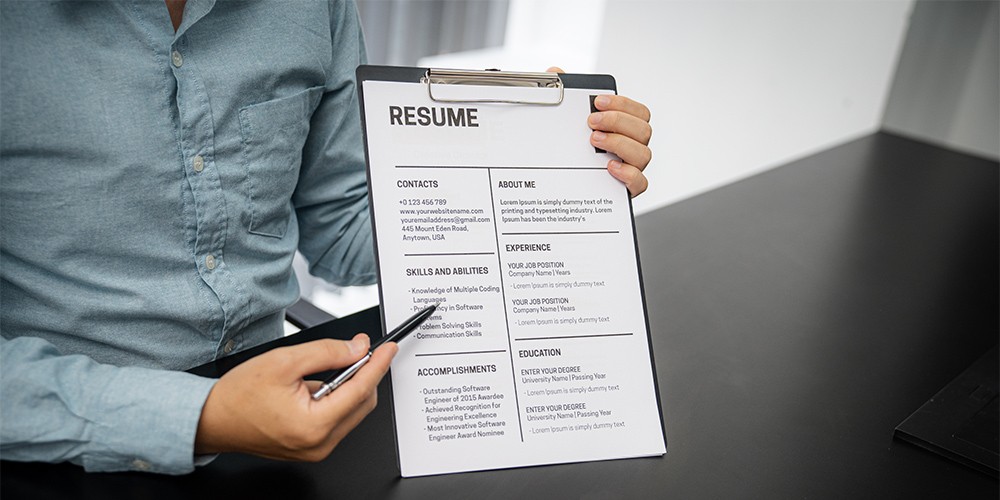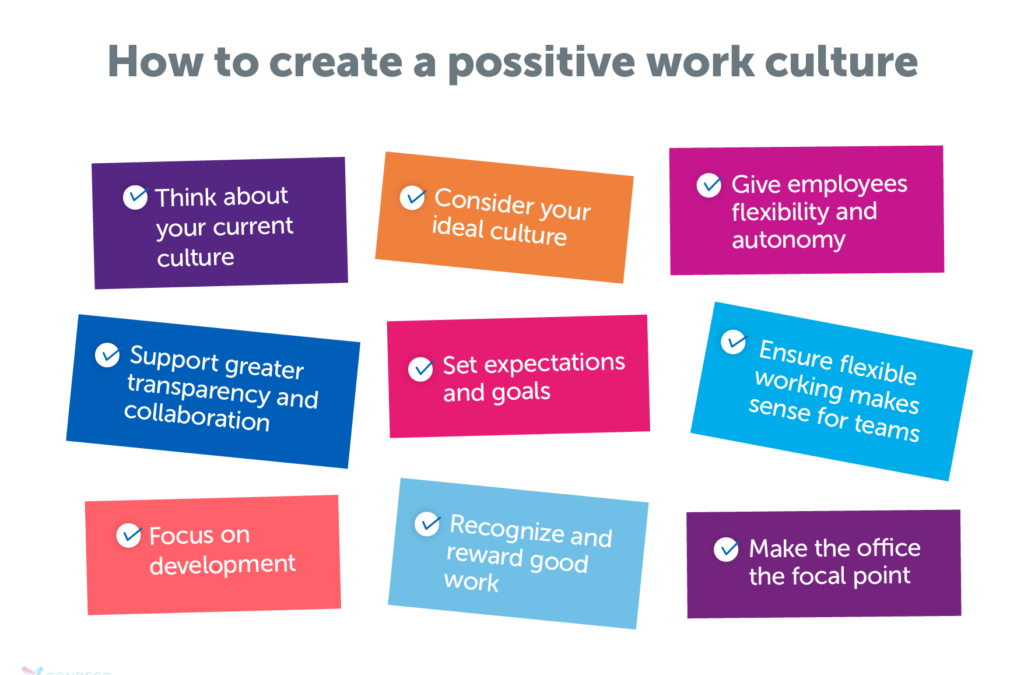
by rousza met | Mar 18, 2024 | Job, Employee Orientation, Employment Application, Interview Techniques, Job Analysis, Skills Gap Analysis
Title: Resume Essentials: What Every Job Seeker Needs to Know
Your resume is your personal marketing tool in the competitive job market. It's the first glimpse potential employers have into your professional background, skills, and capabilities. Crafting a standout resume requires careful attention to detail and a strategic approach. Whether you're a recent graduate entering the workforce or a seasoned professional looking for a career change, understanding the essentials of resume writing is crucial. Let's explore what every job seeker needs to know to create a compelling resume that gets noticed.

1. Clear Formatting and Layout:
Your resume should have a clean and professional appearance. Use a simple, easy-to-read font and maintain consistent formatting throughout the document. Organize information logically, with clear headings and bullet points to make it easy for recruiters to scan.
2. Contact Information:
Ensure your contact information is prominently displayed at the top of your resume. Include your full name, phone number, email address, and LinkedIn profile (if applicable). Make it easy for recruiters to reach out to you for further consideration.
3. Strong Summary or Objective Statement:
Start your resume with a brief summary or objective statement that highlights your career goals and key qualifications. This section should grab the reader's attention and provide a snapshot of your professional background and aspirations.
4. Relevant Work Experience:
List your work experience in reverse chronological order, starting with your most recent job. Include the company name, job title, dates of employment, and a brief description of your responsibilities and achievements for each role. Focus on relevant experiences that demonstrate your skills and accomplishments related to the job you're applying for.
5. Education and Credentials:
Provide details of your educational background, including the name of the institution, degree earned, and graduation date. Mention any relevant certifications, licenses, or professional development courses that enhance your qualifications for the position.
6. Key Skills and Abilities:
Highlight your core skills and competencies that are relevant to the job. This may include technical skills, soft skills, languages, or specialized knowledge relevant to your field. Use keywords from the job description to ensure your resume gets noticed by applicant tracking systems (ATS).
7. Achievements and Accomplishments:
Quantify your achievements whenever possible to demonstrate the impact you've made in previous roles. Use specific metrics, such as percentages, dollar amounts, or project milestones, to illustrate your contributions and results.
8. Tailored to the Job Description:
Customize your resume for each job application by aligning your qualifications and experiences with the requirements of the job. Highlight the skills and experiences that are most relevant to the position to increase your chances of getting noticed by recruiters.
9. Proofread and Edit:
Before submitting your resume, carefully proofread it for spelling and grammatical errors. Ensure that all information is accurate and up-to-date. Consider asking a trusted friend, mentor, or professional contact to review your resume for feedback.
10. Keep it Concise:
Aim to keep your resume concise and focused on the most relevant information. Ideally, your resume should be no more than two pages long, with the most important details featured prominently on the first page.
By incorporating these essential elements into your resume, you can create a powerful document that effectively showcases your qualifications and experiences to potential employers. Remember to tailor your resume for each job application and continuously update it as your career progresses. With a well-crafted resume in hand, you'll be better equipped to land interviews and advance your career goals.

by rousza met | Mar 18, 2024 | Job, Job Analysis, Skills Gap Analysis
Title: Unlocking Opportunities: Building a Winning Resume

In today's competitive job market, your resume serves as your first impression to potential employers. It's your ticket to unlocking opportunities and securing that dream job. But how do you ensure your resume stands out from the crowd? How do you build a winning resume that captures attention and highlights your unique skills and experiences? Let's delve into the art of crafting a resume that opens doors to new career possibilities.
1. Know Your Audience:
Before you start crafting your resume, it's essential to understand who will be reading it. Research the company and the role you're applying for. Tailor your resume to align with the company's values, culture, and job requirements. This targeted approach shows employers that you've taken the time to understand their needs and that you're the right fit for the position.
2. Highlight Your Achievements:
Instead of simply listing your job responsibilities, focus on your accomplishments. Use quantifiable metrics and specific examples to demonstrate your impact in previous roles. Did you increase sales revenue? Streamline processes to improve efficiency? Lead successful projects? Highlighting your achievements not only showcases your skills but also provides concrete evidence of your value to potential employers.
3. Craft a Compelling Summary:
Your resume summary is your chance to make a strong first impression. Use this section to provide a brief overview of your professional background, skills, and career goals. Make it engaging and relevant to the job you're applying for. A well-crafted summary can grab the reader's attention and encourage them to keep reading.
4. Emphasize Relevant Skills:
Identify the key skills and qualifications required for the job, and make sure they're prominently featured on your resume. Whether it's technical skills, soft skills, or industry-specific knowledge, highlight the abilities that set you apart from other candidates. Use specific keywords related to the job to ensure your resume gets noticed by applicant tracking systems (ATS) used by many companies.
5. Keep It Concise and Clear:
Recruiters and hiring managers often have limited time to review each resume, so it's essential to keep yours concise and easy to read. Stick to a clean, professional format with clear headings and bullet points. Use action verbs and concise language to convey your experiences effectively. Aim for a one-page resume whenever possible, focusing on the most relevant information.
6. Proofread and Edit:
Before sending out your resume, take the time to proofread it carefully. Check for spelling and grammar errors, formatting inconsistencies, and any other mistakes that could detract from your professional image. Consider asking a friend or mentor to review your resume as well, as fresh eyes can often catch things you might have missed.
7. Update Regularly:
Your resume is a dynamic document that should evolve as your career progresses. Make it a habit to update your resume regularly, adding new skills, experiences, and achievements as they occur. Even if you're not actively job searching, keeping your resume up-to-date ensures you're always prepared for new opportunities that may arise.
By following these tips and strategies, you can create a winning resume that opens doors to exciting career opportunities. Remember to customize your resume for each job application, highlighting the experiences and skills most relevant to the position. With a well-crafted resume in hand, you'll be well-positioned to unlock new opportunities and take your career to the next level.

by rousza met | Mar 6, 2024 | Skills Gap Analysis
Creating a positive work culture is essential for the growth and sustainability of any organization. It fosters a productive environment, encourages employee engagement, and leads to higher job satisfaction and retention rates. A positive work culture also improves team collaboration, creativity, and overall company performance. Here are key strategies to create and maintain a positive work culture:
1. Promote Open and Honest Communication
– Transparency:Keep lines of communication open. Ensure that employees feel comfortable sharing their ideas, concerns, and feedback. This can be facilitated through regular team meetings, one-on-one check-ins, and open-door policies.
– Active Listening: Encourage leaders and managers to practice active listening, showing employees that their voices are heard and valued.
2. Foster Inclusivity and Diversity
– Respectful Environment: Cultivate an environment where all employees feel respected and included, regardless of their background, identity, or position within the company.
– Diversity Initiatives: Implement diversity and inclusion programs that celebrate different cultures, perspectives, and ideas.
3. Encourage Work-Life Balance
– Flexible Work Arrangements: Offer flexible working hours, remote work options, or part-time schedules to help employees manage their personal and professional lives effectively.
– Mental Health Support: Provide access to mental health resources and encourage taking personal time off to prevent burnout.
4. Invest in Employee Development
– Training and Education: Offer opportunities for professional development, such as workshops, courses, and seminars, to help employees advance their skills and careers.
– Career Pathing: Work with employees to define clear career paths within the organization, showing them that they have a future at the company.
5. Recognize and Reward Achievements
– Acknowledgment: Regularly recognize and celebrate employee achievements, big and small. This can be done through shout-outs in company meetings, awards, or bonuses.
– Feedback:Provide constructive and positive feedback regularly, helping employees understand their progress and areas for improvement.
6. Build a Sense of Community
– Team-building Activities: Organize events and activities that promote teamwork and social interaction among employees.
– Volunteer Opportunities:Offer opportunities for employees to give back to their community together, reinforcing a sense of purpose and togetherness.
7. Lead by Example
– Leadership: Leaders should embody the values and behaviors they wish to see throughout the organization. Leading by example is crucial in setting the tone for a positive work culture.
8. Implement Wellness Programs
– Physical and Mental Wellness: Offer wellness programs that support both physical and mental health, such as gym memberships, yoga classes, or meditation sessions.
9.Continuous Improvement
-Feedback Loops:Establish mechanisms for continuous feedback on the work culture from employees. Use this feedback to make informed changes and improvements.
Conclusion
Creating a positive work culture is an ongoing effort that requires commitment from all levels of an organization. By prioritizing open communication, inclusivity, employee well-being, and development, companies can cultivate an environment where employees feel valued, supported, and motivated to contribute their best work. Remember, a positive work culture not only benefits employees but is also a key driver of organizational success.

by rousza met | Mar 5, 2024 | Skills Gap Analysis
Make Time for Yourself: The Essentiality of Self-Care
In the hustle and bustle of modern life, it's easy to get caught up in the endless cycle of responsibilities, deadlines, and social obligations. Amidst this whirlwind of activities, self-care often falls by the wayside, mistakenly labeled as a luxury or an act of selfishness. However, the reality couldn't be further from the truth. Self-care is not just a mere indulgence; it's a fundamental necessity for maintaining both mental and physical health. It's about making a conscious effort to carve out time for activities that rejuvenate your mind and body, ensuring that you're not just surviving, but thriving.
Understanding Self-Care
Self-care refers to the practice of taking an active role in protecting one's own well-being and happiness, particularly during periods of stress. It embodies the simple yet profound idea that in order to take care of others, you must first take care of yourself. This concept goes beyond the basic physical needs and extends to maintaining one's mental and emotional health.
Why Self-Care Is Essential
- Mental Health Maintenance: Regular self-care activities can significantly reduce stress, combat depression, and boost overall mood. It's a way to reset and refresh your mental state, allowing you to tackle challenges with a clearer, more positive mindset.
- Physical Health Benefits: Many self-care practices, such as exercising, practicing yoga, or getting enough sleep, have direct physical health benefits. They can improve heart health, reduce the risk of chronic diseases, and enhance your overall physical well-being.
- Enhanced Productivity: Ironically, taking time out for self-care can actually make you more productive. By allowing yourself periods of relaxation and activities you enjoy, you can return to your responsibilities with increased focus, energy, and creativity.
- Better Relationships: When you're well-rested and at peace with yourself, you're more likely to have positive interactions with others. Self-care helps you become more patient, understanding, and kind, which can lead to stronger and healthier relationships.
How to Incorporate Self-Care into Your Life
Making time for self-care doesn't have to involve grand gestures or lengthy time commitments. It's about finding small, manageable ways to incorporate activities that make you feel good into your daily routine. Here are a few suggestions:
- Read a Book: Whether it's fiction, non-fiction, or poetry, reading can be a great escape that stimulates your mind and sparks your imagination.
- Exercise Regularly: Physical activity is a proven stress reliever. Find something you enjoy, whether it's yoga, running, or dancing, and make it a part of your routine.
- Pursue a Hobby: Engaging in hobbies you love can be incredibly rewarding and a great way to express yourself.
- Practice Mindfulness: Meditation, deep-breathing exercises, or simply spending time in nature can help center your thoughts and reduce anxiety.
- Connect with Loved Ones: Spending quality time with friends or family can provide emotional support and strengthen your bonds.
Final Thoughts
In conclusion, self-care is far from selfish; it's a vital component of living a balanced and fulfilling life. By ensuring you carve out time for activities that rejuvenate your mind and body, you're not only enhancing your own well-being but also enriching the lives of those around you. Remember, self-care is a necessity, not a luxury. Make it a priority, and watch how your life transforms.

by rousza met | Mar 5, 2024 | Job, Job Analysis, Skills Gap Analysis
Achieving Job Balance: Navigating Work and Life in Harmony
In an era where the lines between work and personal life increasingly blur, achieving job balance has become more crucial than ever. This elusive equilibrium not only enhances productivity and career satisfaction but also improves mental health and personal relationships. This blog explores the concept of job balance, why it's essential, and practical strategies to navigate work and life in harmony.
Understanding Job Balance
Job balance is not merely about dividing hours between work and personal life; it's about achieving a state where both aspects complement rather than compete with each other. It's the ability to fulfill your professional responsibilities while having enough time and energy for personal interests and family. Achieving this balance leads to reduced stress, increased job satisfaction, and overall better quality of life.
The Importance of Job Balance
The significance of job balance cannot be overstated. Constantly tipping the scales towards work can lead to burnout, stress, and health issues. Conversely, neglecting professional responsibilities can result in career stagnation or financial instability. A balanced approach ensures sustained productivity, fosters creativity, and maintains physical and emotional well-being.
Strategies for Achieving Job Balance
1. Set Clear Boundaries: Establish clear limits between work and personal time. This might mean turning off work emails after a certain hour or dedicating weekends solely to family and leisure activities. Clear boundaries prevent work from seeping into every aspect of your life.
2. Prioritize Tasks : Not all tasks are created equal. Identify what's urgent and important, and allocate your time accordingly. Learning to prioritize effectively can significantly reduce work-related stress and free up time for personal pursuits.
3. Learn to Say No: Overcommitting is a common trap. Be realistic about what you can handle, and don't be afraid to say no to additional responsibilities if they threaten your ability to maintain balance.
4. Embrace Flexibility: The traditional 9-to-5 model doesn't fit everyone. If possible, negotiate flexible working hours or remote work options with your employer. Flexibility can be key to balancing work demands with personal needs.
5. Make Time for Yourself: Self-care is not selfish; it's necessary. Ensure you carve out time for activities that rejuvenate your mind and body, whether it's reading, exercising, or pursuing a hobby.
6. Leverage Technology Wisely: Technology can be a double-edged sword. Use productivity tools to streamline your work, but be mindful of technology's tendency to encroach on personal time. Set app limits and designate tech-free zones in your home to disconnect and recharge.
7. Communicate Your Needs: Open communication with your employer about your need for balance is crucial. Many organizations are recognizing the importance of work-life balance and may offer solutions like flexible schedules, mental health days, or support programs.
8. Evaluate and Adjust Regularly: Achieving job balance is an ongoing process. Regularly assess your work-life balance and make adjustments as needed. Life changes, and so will your balancing act.
Conclusion
Achieving job balance is essential for sustaining professional success and personal happiness. It requires conscious effort, clear boundaries, and continuous adjustment. By implementing these strategies, you can navigate the demands of work and life in harmony, leading to a more fulfilling and balanced existence. Remember, balance is not a final destination but a journey that requires constant navigation and adjustment.






